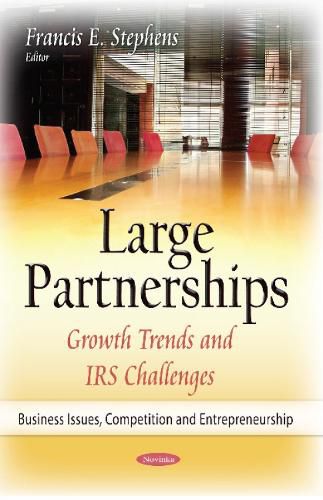Readings Newsletter
Become a Readings Member to make your shopping experience even easier.
Sign in or sign up for free!
You’re not far away from qualifying for FREE standard shipping within Australia
You’ve qualified for FREE standard shipping within Australia
The cart is loading…






The number of large partnerships has more than tripled to 10,099 from tax year 2002 to 2011. Almost two-thirds of large partnerships had more than 1,000 direct and indirect partners, had six or more tiers and/or self-reported being in the finance and insurance sector, with many being investment funds. The Internal Revenue Service (IRS) audits few large partnerships. Most audits resulted in no change to the partnership’s return and the aggregate change was small. Although internal control standards call for information about effective resource use, IRS has not defined what constitutes a large partnership and does not have codes to track these audits. According to IRS auditors, the audit results may be due to challenges such as finding the sources of income within multiple tiers while meeting the administrative tasks required by the Tax Equity and Fiscal Responsibility Act of 1982 (TEFRA) within specified time frames. This book determines what IRS knows about the number and characteristics of large partnerships; assesses IRS’s ability to audit them; and also assess IRS’s efforts to address the audit challenges.
$9.00 standard shipping within Australia
FREE standard shipping within Australia for orders over $100.00
Express & International shipping calculated at checkout
The number of large partnerships has more than tripled to 10,099 from tax year 2002 to 2011. Almost two-thirds of large partnerships had more than 1,000 direct and indirect partners, had six or more tiers and/or self-reported being in the finance and insurance sector, with many being investment funds. The Internal Revenue Service (IRS) audits few large partnerships. Most audits resulted in no change to the partnership’s return and the aggregate change was small. Although internal control standards call for information about effective resource use, IRS has not defined what constitutes a large partnership and does not have codes to track these audits. According to IRS auditors, the audit results may be due to challenges such as finding the sources of income within multiple tiers while meeting the administrative tasks required by the Tax Equity and Fiscal Responsibility Act of 1982 (TEFRA) within specified time frames. This book determines what IRS knows about the number and characteristics of large partnerships; assesses IRS’s ability to audit them; and also assess IRS’s efforts to address the audit challenges.